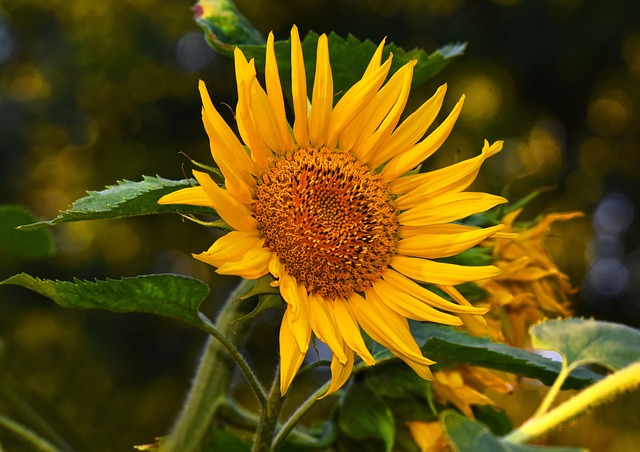As winter approaches, gardeners often wonder how to help their cherished annual plants endure the cold and snow. While annuals typically have a short lifespan, there are ways to increase their chances of surviving the winter and thriving in challenging conditions. In this comprehensive guide, we will explore various annual plants such as alyssum, calibrachoa, coleus, moss rose, pansies, portulaca, gazanias, nemesia, and dusty miller, and provide practical tips to meet your winter gardening goals.
1. Alyssum (Lobularia maritima)
Alyssum, known for its fragrant, delicate flowers, is a favorite among gardeners. However, it hails from Mediterranean regions and struggles in harsh winter conditions. To improve its chances of surviving the winter:
- Plant alyssum in well-draining soil to prevent root damage.
- Apply a layer of mulch for insulation and protection.
- Consider using cold frames or row covers to shield alyssum from the elements.
While these steps may prolong alyssum’s life, many gardeners prefer treating it as an annual and replanting in the spring for a fresh display of blooms.
2. Calibrachoa (Calibrachoa spp.)
Calibrachoa, often called “million bells,” boasts an abundance of small, trumpet-shaped flowers. Unlike its cousin, the petunia, calibrachoa is not particularly winter-hardy. Native to South America, it thrives in warmer climates.
To enhance calibrachoa’s winter survival odds:
- Prune the plant in late fall to remove leggy growth and spent blooms.
- Bring potted calibrachoa indoors to a sunny location.
- Shield outdoor calibrachoa with frost cloth or burlap during frosty periods.
While calibrachoa may not reliably endure winter in most regions, these precautions can help it weather milder cold spells.
3. Coleus (Plectranthus scutellarioides)
Coleus is beloved for its diverse foliage colors and patterns, making it an attractive ornamental plant. Unfortunately, coleus is highly sensitive to cold temperatures and typically doesn’t survive outdoors in winter.
To maintain coleus through winter:
- Transfer coleus cuttings to pots for indoor cultivation before the first frost.
- Maintain indoor temperatures above 50°F (10°C).
- Ensure adequate lighting indoors with grow lights or a sunny windowsill.
For regions with chilly winters, consider coleus as a captivating houseplant that can rejoin your garden in the spring.
4. Moss Rose (Portulaca grandiflora)
Moss rose, also known as portulaca, features vibrant, daisy-like flowers and thrives in hot, sunny conditions. Unfortunately, it is not well-suited for winter survival.
To protect moss rose during winter:
- Harvest seeds in the fall for planting in the spring.
- In milder climates, leave plants in the ground but provide a thick layer of mulch.
- For colder areas, grow moss rose as an annual or in containers that can be brought indoors for winter.
While moss rose is easily grown from seeds, don’t expect it to reliably survive the winter outdoors.
5. Pansies (Viola × wittrockiana)
Pansies are renowned for their cheerful blooms and impressive frost resistance, making them a valuable addition to winter gardens in many regions. The pansies are technically perennials but often treated as annuals due to their short lifespan.
To enhance pansies’ winter performance:
- Plant them early in the fall to establish strong roots.
- Mulch around the plants to insulate the roots from cold.
- Adjust watering practices for reduced moisture requirements during the winter.
Pansies can thrive in the face of light snow and frost, ensuring a vibrant winter garden.
6. Portulaca (Portulaca oleracea)
Portulaca, also called purslane or moss rose, is a drought-tolerant succulent annual that prefers hot and sunny conditions. However, it’s not suitable for winter survival in most climates.
To prolong the life of your portulaca through winter:
- Harvest seeds in the fall for spring replanting.
- Consider growing portulaca in containers that can be moved indoors during winter.
While portulaca is a resilient annual, it’s best enjoyed as a seasonal garden addition rather than relying on it to endure the winter outdoors.
7. Gazanias (Gazania spp.)
Gazanias, known for their sun-loving nature and striking daisy-like flowers, are native to South Africa and thrive in warm, dry climates. Unfortunately, they are not frost-tolerant and usually don’t survive winter in most regions.
To help gazanias face winter:
- Plant them in well-draining soil to prevent root issues.
- Grow gazanias in containers that can be brought indoors or placed in a greenhouse during winter.
While gazanias are stunning annuals, they are best appreciated as seasonal garden accents and should not be expected to withstand winter outdoors.
8. Nemesia (Nemesia spp.)
Nemesia, with its fragrant trumpet-shaped flowers and compact growth, is another delightful annual. Native to South Africa, it thrives in mild climates and is not well-suited for harsh winters.
To promote nemesia’s winter survival:
- Cultivate nemesia in containers that can be moved indoors as winter approaches.
- In regions with moderate winters, protect outdoor nemesia from frost with frost cloth.
While nemesia adds charm to gardens, it may not endure the winter without proper care, especially in colder climates.
9. Dusty Miller (Senecio cineraria)
Dusty miller, prized for its silvery-gray foliage that adds texture to garden beds and containers, is more cold-tolerant than some annuals but not guaranteed to survive all winter conditions.
To support dusty miller through winter:
- Prune the plant in late fall to encourage a bushier habit and remove leggy growth.
- Apply mulch around the plants for insulation.
- In regions with milder winters, dusty miller may overwinter in the garden but benefits from additional protection during extreme cold.
Dusty miller often thrives during winter in regions with moderately cold temperatures when given a little extra care.
Conclusion
While annual plants are known for their short lifespan, it’s possible to extend their life through the winter months with proper care and protection. Pansies, for example, are known for their ability to add color to winter gardens. Other annuals, including alyssum, calibrachoa, coleus, moss rose, portulaca, gazanias, nemesia, and dusty miller, may require more attention but can still bring joy to your garden during the colder seasons.
The success of overwintering annuals depends on your region’s climate and the care you provide, such as mulching, covering, or bringing them indoors. Experiment with these strategies to find the best approach for your specific conditions and enjoy the beauty of your favorite annuals year-round.










